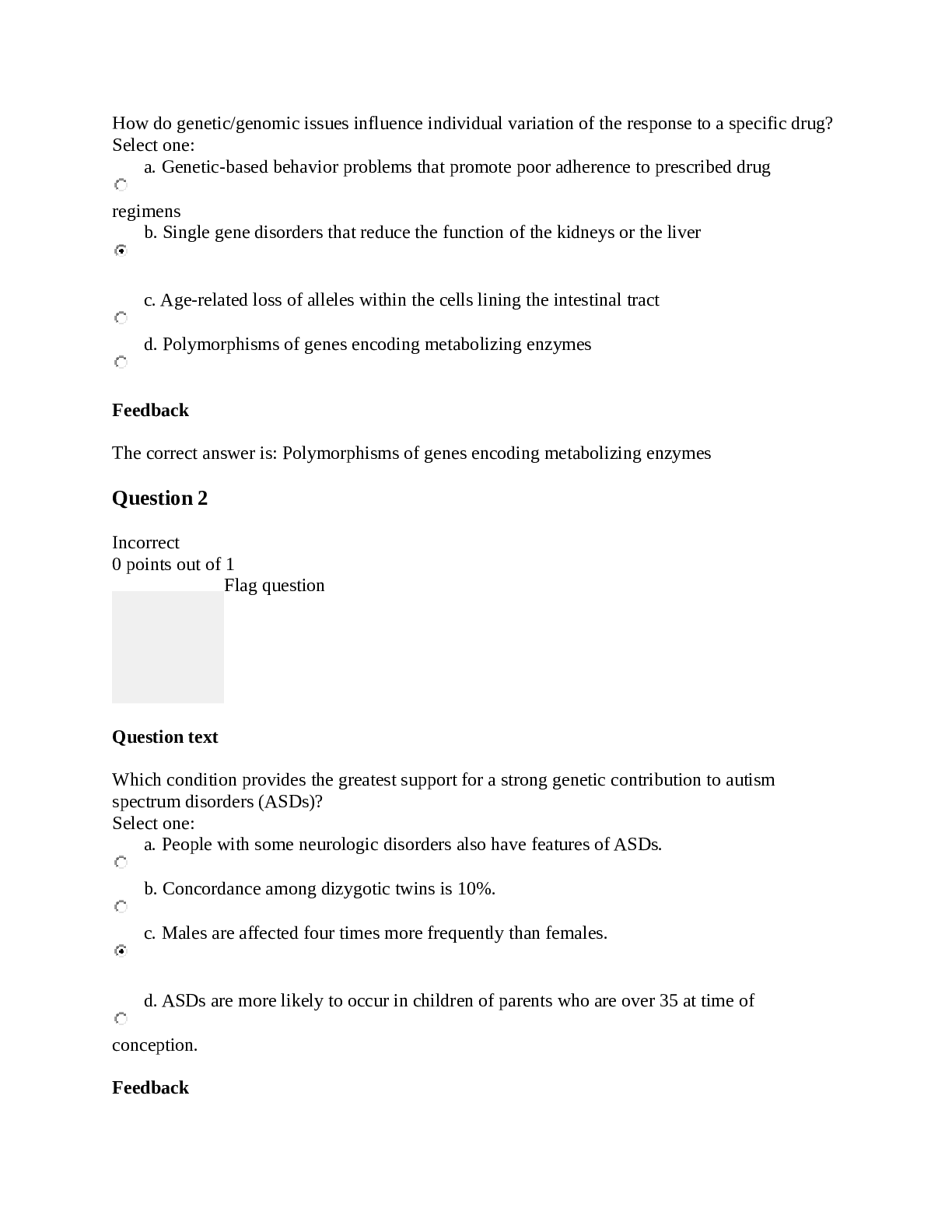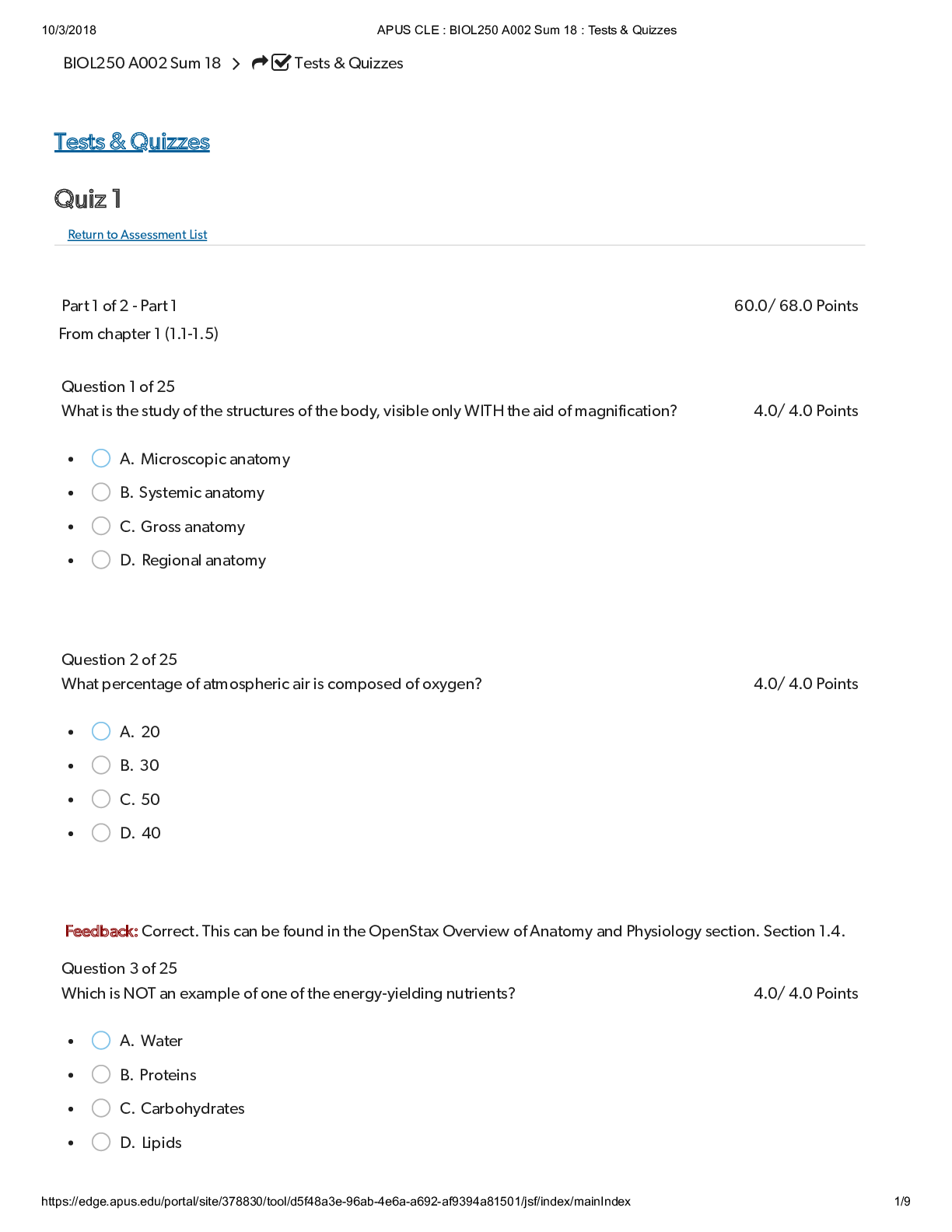Pathophysiology > QUESTIONS & ANSWERS > South University, Savannah Week 1 Quiz Pathophysiology With Complete Solution | Score: 100% | (All)
South University, Savannah Week 1 Quiz Pathophysiology With Complete Solution | Score: 100% |
Document Content and Description Below
Week 1 Quiz Patho Grade Details - All Questions This study source was downloaded by 100000831988016 from CourseHero.com on 04-19-2022 02:12:14 GMT -05:00 https://www.coursehero.com/file/14002113/We... ek-1-Quiz-Patho/ Question 1. Question : Passive transport is best described by which statement? Student Answer: Being driven by osmosis, hydrostatic pressure, and diffusion Involving receptors that can bind with substances being transported Being capable of transporting macromolecules Requiring energy generated by the cell Instructor Explanation: Water and small electrically uncharged molecules move easily through pores in the plasma membrane’s lipid bilayer. This process, called passive transport, naturally occurs through any semipermeable barrier. It is driven by osmosis, hydrostatic pressure, and diffusion, all of which depend on the laws of physics and do not require life. The other options do not correctly describe passive transport. Question 2. Question : Why is it possible for potassium to diffuse easily into and out of cells? Student Answer: Potassium has a greater concentration in the ICF. Sodium has a greater concentration in the ECF. The resting plasma membrane is more permeable to potassium. An excess of anions is inside the cell. Instructor Explanation: Because the resting plasma membrane is more permeable to K+ than to Na+ , K+ can easily diffuse from its area of higher concentration in the ICF to its area of lower concentration in the ECF. Because Na+ and K+ are both cations, the net result is an excess of anions inside the cell, resulting in the resting membrane potential. The remaining options do not correctly identify the process that most easily diffuses K+ . Question 3. Question : In hypoxic injury, sodium enters the cell and causes swelling because: Student Answer: The cell membrane permeability increases for sodium during periods of hypoxia. ATP is insufficient to maintain the pump that keeps sodium out of the cell. The lactic acid produced by the hypoxia binds with sodium in the cell. Sodium cannot be transported to the cell membrane during hypoxia. This study source was downloaded by 100000831988016 from CourseHero.com on 04-19-2022 02:12:14 GMT -05:00 Instructor In hypoxic injury, movement of fluid and ions into the cell is associated with acute failure of https://www.coursehero.com/file/14002113/Week-1-Quiz-Patho/ This study source was downloaded by 100000831988016 from CourseH [Show More]
Last updated: 1 year ago
Preview 1 out of 3 pages

Reviews( 0 )
Document information
Connected school, study & course
About the document
Uploaded On
Apr 19, 2022
Number of pages
3
Written in
Additional information
This document has been written for:
Uploaded
Apr 19, 2022
Downloads
0
Views
64

.png)
.png)
.png)
.png)
.png)
.png)
.png)
.png)
.png)
.png)
.png)

.png)

.png)
.png)


.png)













